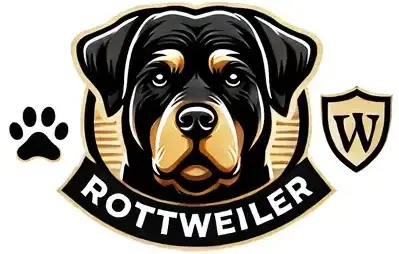Last Updated on April 24, 2024 by Dr. Julie
Are you a pet owner wondering how to tell how big a puppy will be even before buying it from the breeders to avoid disappointments?
Most pet owners want to know how big my dog will be once it grows up before they can take the puppy home to prepare early for the kind of pet they are raising.
Having a clear idea of your puppy’s adult size helps you plan for a dog collar, a dog crate, fencing your yard, and other needs that suit your type of dog.
Determining what size your puppy will be as an adult can be challenging. A good guess may be by considering the size of the dog breed, but that information may not be readily available, especially for mixed breeds.
We will discuss some factors that affect a puppy’s growth, as well as handy formulas you can use to predict your puppy’s adult height and weight. However, keep in mind that all these are rough estimates and are not always accurate. You could end up with a much smaller or bigger dog than you estimated!
Table of Contents
How Big Will My Puppy Get?
Generally, the size of an average adult dog at 12 months old is at least 2½ times their weight at 14 weeks or twice the weight at 4 months of age.
Here are some generalized estimates that most pet owners use.
- Breed – The dog’s growth rate and full size vary widely by the breed type
- Parents – You are a lucky one; if you see your puppy’s parents, then you can get a good idea of how big your puppy will be based on their parent’s sizes.
- Gender – Male puppies, in most cases, will always grow larger than females.
Is Paw Size A Real Predictor?
Is it a myth or true that a puppy’s paw can give you an idea of how big your puppy will get? Yes, many pet owners believe this predictor, but it is not always accurate. This is because paw size depends on the type of breed.
For example, some large dogs have small paws like collies, while other medium breeds have large paws for their size, like bulldogs.
Let’s See How A Puppy’s Paws Predict The Adult’s Weight
While it is not guaranteed, a puppy’s paws can be a great indicator of future growth spurts, especially if the paws are huge.
There is a rule that is easy to remember –
- If the puppy’s feet are bigger than their body, then they have more growth spurts left.
- If the feet look like they are the right size for their body, the puppy might not grow any bigger.

Learn more about: How To Train A Rottweiler Puppy Not To Bite
How To Tell If This Rule Works On The Puppy
Large breed dogs like Labrador retrievers have bigger feet to support their heavier bodies and taller heights. This means that even when this dog is still a puppy, its paws are already on the larger side, anticipating more growth.
Similarly, if your puppy has tiny feet, they will likely end up small even when they are adults.
However, even though the paw size can be a good indicator of whether your puppy will be a big or small dog, it doesn’t tell accurately how big or small your dog will be. You will have to wait to find out this mystery as your dog grows.
Tell The Weight Of A Puppy By Its Breed Size.
Dogs growth rate varies by breed. There are other formulas to predict their adult weight by its breed size. These breeds are broken down into 5 different sizes that we will look at.
- Toys – they weigh up to 12 pounds
- Small – 12 to 25 pounds
- Medium – Weight 25 to 50 pounds
- Large – 50 to 100 pounds
- Giant – Over 100 pounds
The Toy Breed
This breed grows faster than any other breed and stops growing at least 8 to 9 months. Most of their growth happens when they are 0-11 weeks. On average, they gain about 5 to 10% of their body weight each day. To predict its adult size, you will need to take its 6-week weight, multiply it and multiply it again. For example, a puppy that weighs 2 pounds at 6 weeks will weigh – 2×2=4 4×2=8. It will weigh 8 pounds. Some popular toy breeds are – Pekinese, Chihuahua, Yorkshire Terrier, Maltese, Shih Tzu, Toy Poodle, etc.
Small Breeds
When do puppies stop growing? These small breeds stop growing around 8 to 12 months. Most of their growth happen 0 – 11 weeks, and they gain 5 to 8 ounces each week. Use the same formula for toy breed to predict their weight – take their 6-week weight, double it and double it again. Popular small dogs include French Bulldog, Shetland Sheepdog, Beagle, Dachshund, and Jack Russel Terrier.
Read more about: What Is A Miniature Rottweiler Full Grown Like?
Medium Breeds
The most common medium breeds are Staffordshire bull terrier, Bulldog, English Springer spaniel, Basset hound, and whippet. These breeds usually reach adulthood between 9 to 12 months of age. Their rapid growth occurs between 0 to 16 weeks. To calculate the weight for these breeds, use their weight at 14 weeks multiply by 2, and add that figure to ½ of their week 14 weight. For example, if your puppy weighs 16 pounds at 14 weeks, you will multiply 16×2-32 32+8=40 pounds.,
Large Breeds
Large breeds take up to 12 to 18 months to reach their adult weight and height. Their most rapid growth happens at 0 to 20 weeks. To calculate their adult weight, you can
Divide their weight at 20 weeks by the current age in weeks and multiply the answer by 52. So their weight at 20 weeks is 40, 40/20=2, 2×52=104pounds
Or divide their weight at 6 months of age.
These large breeds include German Shepherd, Labrador, Golden retriever, Rottweiler, Doberman, Standard Poodle, etc.
Giant Breeds
These breeds take up to 12 to 18 months to complete their growing. However, they can take up to 2 or 3 years before reaching their full mature size. Their most rapid growth happens when they are 0 to 25 weeks. How do you calculate for this breed?
Divide their weight at 20 weeks by their current age in weeks and multiply by 52.
Or double their weight at 6 months of age.
Some of the giant breeds include Irish Wolfhound, Saint Bernard, Great Dane, etc.
Conclusion
To know how big my puppy will get, measure its height at 6 months of age, multiply by 100, and divide the answer by 75.
Generally, puppies achieve 75% of their adult height at 6 months old! You can now tell the weight and height of a puppy with ease using this clear guide for you.
